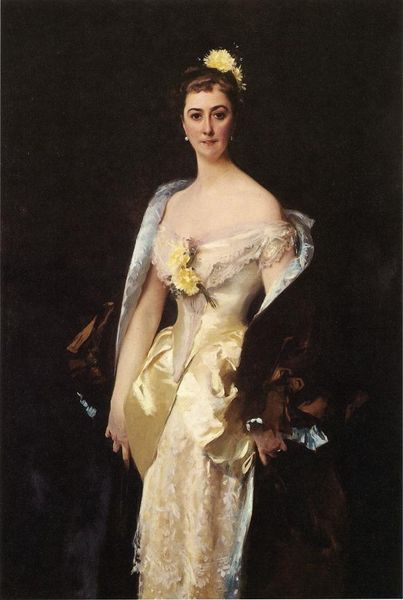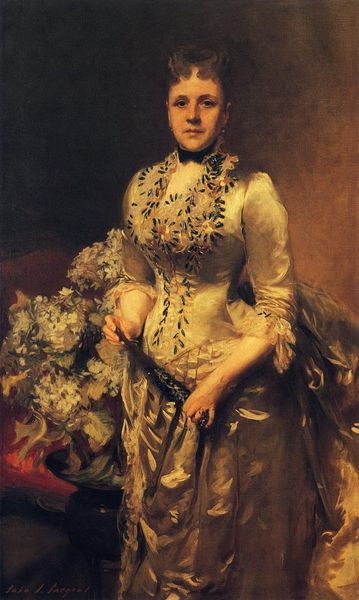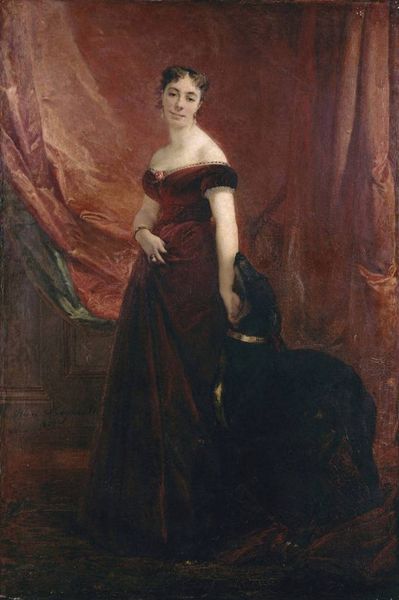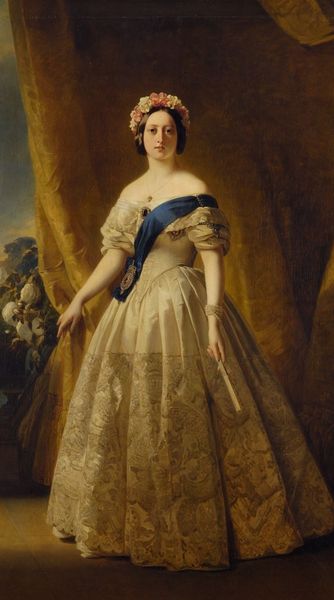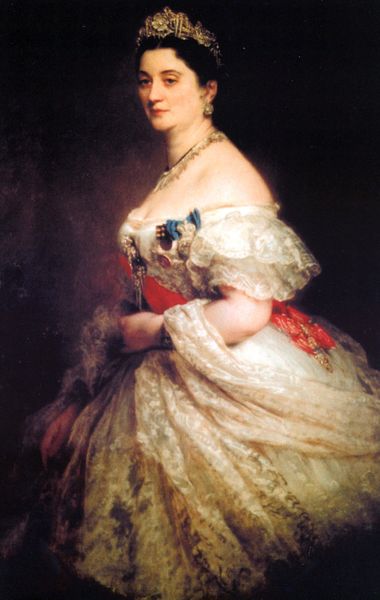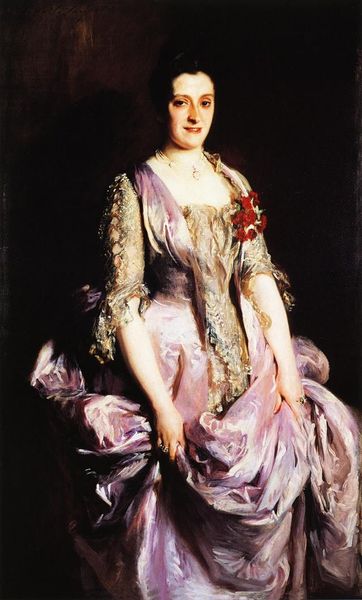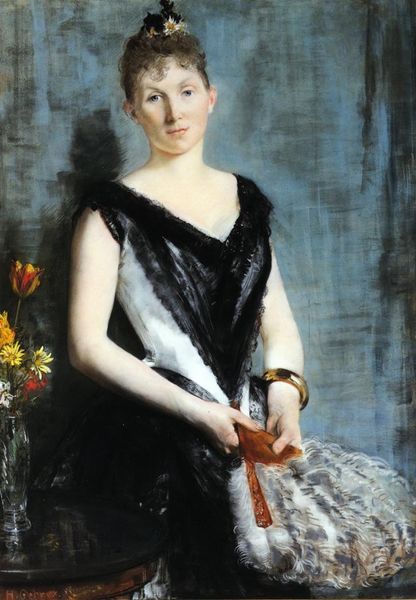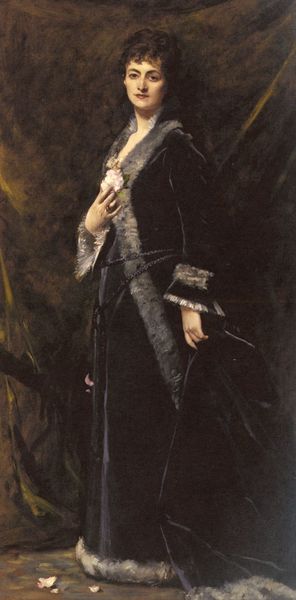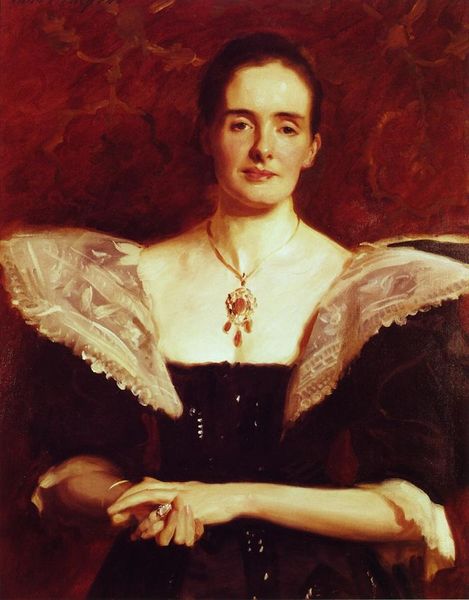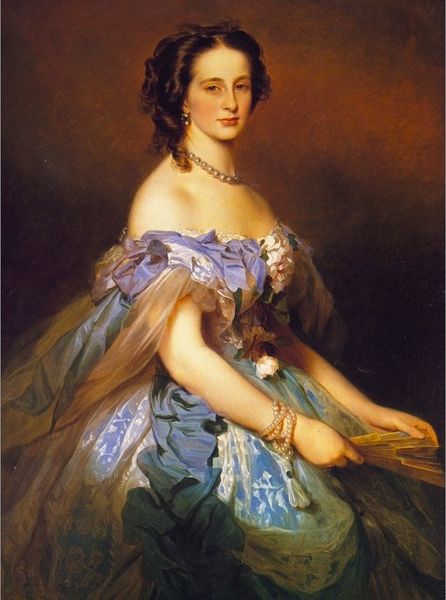
painting, oil-paint
#
portrait
#
painting
#
impressionism
#
oil-paint
#
academic-art
Dimensions: 152.1 x 98.4 cm
Copyright: Public domain
Curator: John Singer Sargent’s portrait of Lady Playfair, painted in 1884 using oil paints, presents us with a woman whose direct gaze seems to simultaneously invite and challenge us. What's your initial take on it? Editor: Well, she certainly commands attention! The dramatic contrast between her golden gown and the dark background creates an immediate sense of power and presence, almost radiating outwards from the canvas. I also get the feeling she may feel somewhat burdened by it, a queen among men but still only a queen in their court. Curator: It’s interesting that you interpret it that way, considering the historical context. During this period, portraiture served as a visual signifier of status and social standing, largely dictated by patriachal societal conventions, with painting being one of very few socially-acceptable careers. Sargent often navigated those societal expectations while subtly imbuing his female subjects with agency. Editor: Precisely! The choice of a golden gown, far from simple, suggests an attempt at challenging such societal constrains. But at the same time, one might see a reflection of class inequality inherent in the gilded trappings of wealth and power. Consider the politics of representation—who gets immortalized in paint, and at what cost? She is still a noblewoman on the backdrop of the opulence in a bygone era. Curator: Absolutely, and looking at how Sargent depicts the fabric with such gestural brushstrokes, we might question the degree to which any single narrative can capture the lived experience of Victorian women, as any representation bears traces of historical conditions in artistic and political spaces, doesn't it? This could well be considered a subversive reading. Editor: The symbolism speaks of that duality. While the artist suggests social restrictions of class and gender in her portrayal, he elevates it into a poignant symbol of personal expression in times where expression was difficult. And yet, she's forever caught in that power dynamic. What do you find the painting says to contemporary audiences, in all of that? Curator: Ultimately, the work invites a discourse on the ways women, across generations, engage in creating meaning and claiming visibility within complex systems. Lady Playfair becomes an intercessor in the visual culture of our shared past. Editor: I agree. I’ll leave feeling the portrait serves as a visual echo chamber that resonates today with questions about how much—and how little—things may have truly changed.
Comments
No comments
Be the first to comment and join the conversation on the ultimate creative platform.
